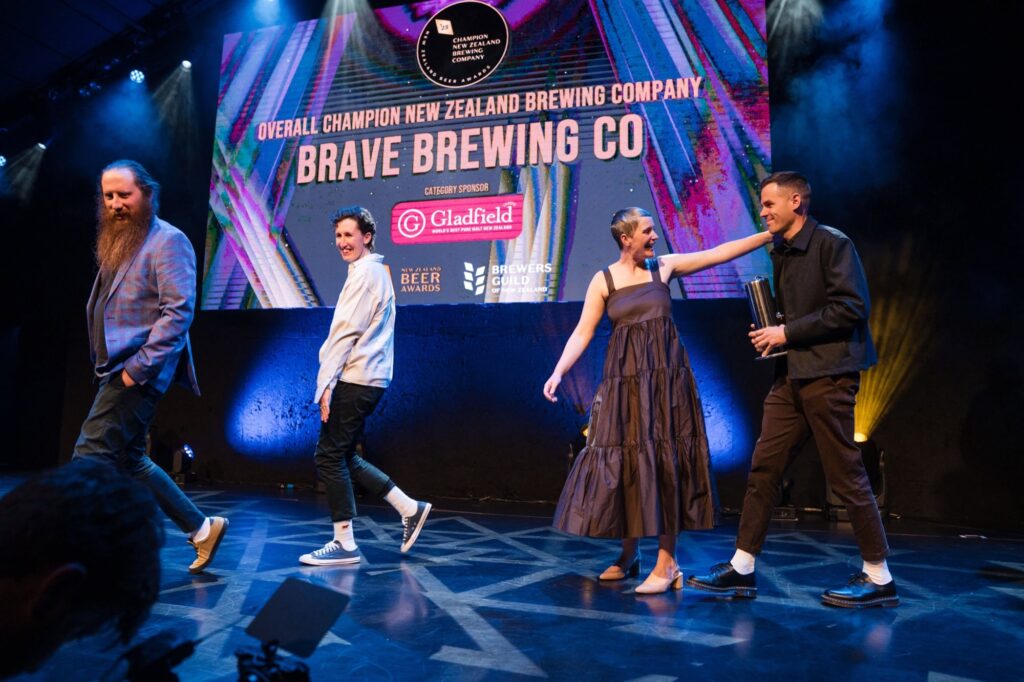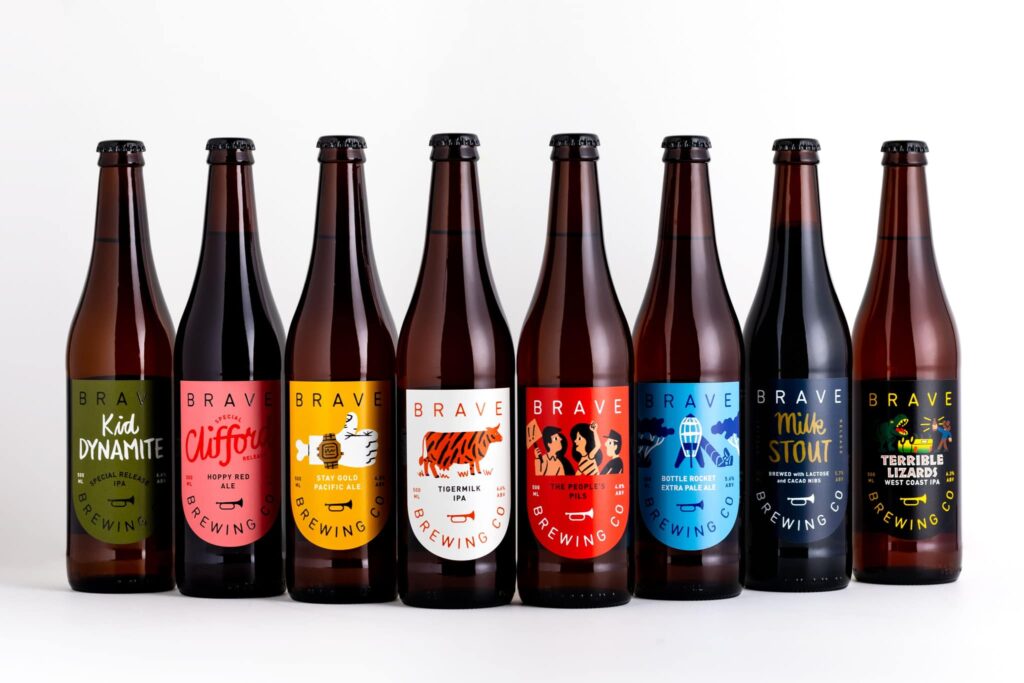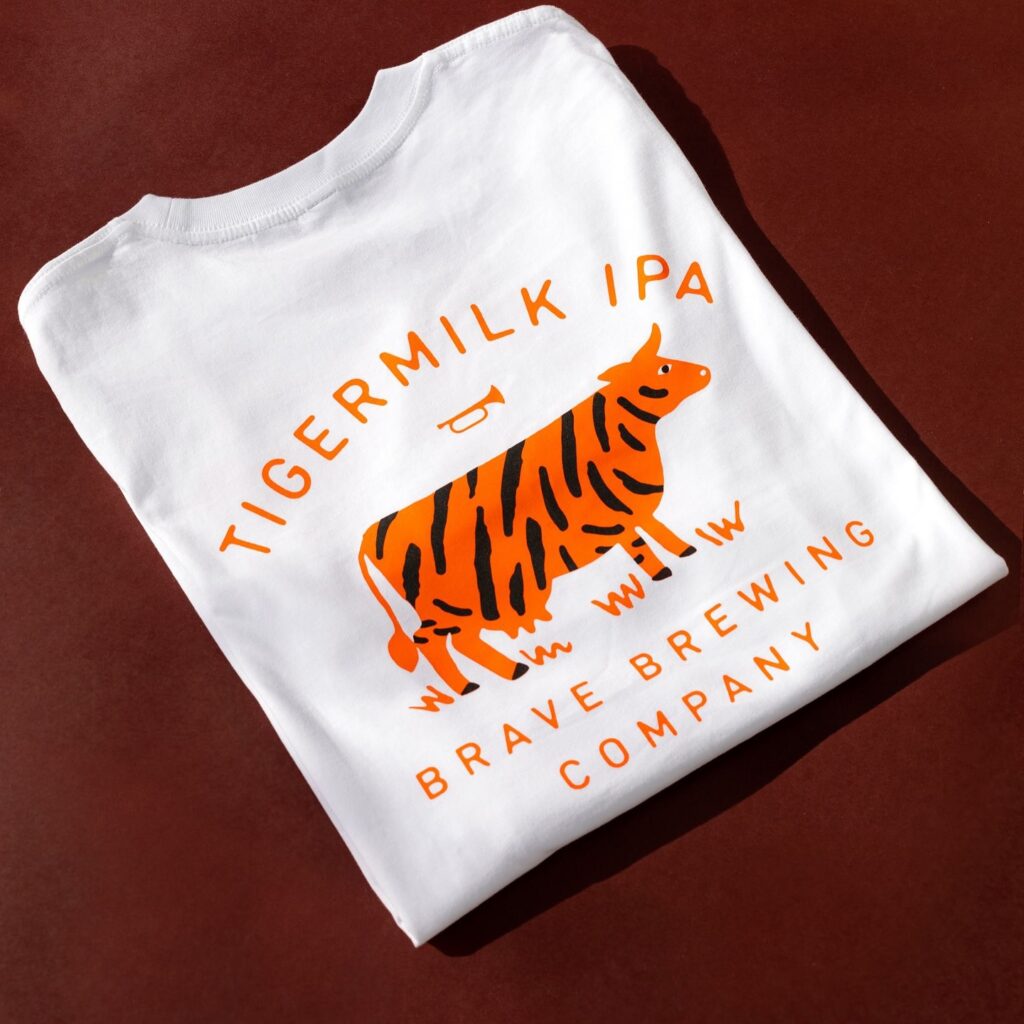Just days before Brave Brewing won the Champion Brewery crown at the New Zealand Beer Awards, founder-brewer Matt Smith was wondering aloud about “imposter syndrome”.
Talking to the Third Pint Theory podcast, Matt said that despite more than a decade of professional brewing he still had doubts as to whether he was good enough.
“I think, still to this day, I have a little bit of imposter syndrome; about whether or not I’m the man for the job.”
Any doubts were well and truly buried in Christchurch on August 2 when Hastings-based Brave Brewing took home five trophies including champion overall brewery and champion small brewery.
They added trophies for Tigermilk IPA, Stay Gold, a Pacific Wheat Ale, and True Blue, a west coast Pilsner.
Gemma Smith, who founded Brave Brewing Company with her husband Matt in 2013, says they’re humbled by the accolades.
“The love and support we’ve received from the industry has been heartwarming. Our team has worked incredibly hard to refine our beers — taking incremental steps to brew the best possible beer. Having this feedback from some of the best judging palates around has been so validating.”
Matt and Gemma grew up in Hawke’s Bay but were living in Auckland when Matt won the 2013 national home brew championship and decided to try his hand at brewing professionally.
“We grew up here, spent about 10 years in Auckland, but both of our families are still here,” Matt explains.
“So, after 10 years up there, when I had this fanciful idea of starting a brewery, we thought, ‘oh, let’s come home to Hawke’s Bay, and where we have supportive friends and family and try it there’.
Gemma added: “There were quite a few factors in wanting to come back here, specifically to start the business as well, just a lot of it around having that family and friends support, but also just in terms of cost.
“To get started, we don’t come from a lot of money, so we needed to make sure it would be achievable and done in a natural and organic way.

“But just even moving back here, we were able to buy our first home and our mortgage was significantly less than what we were paying for rent in Auckland at the time.”
Brave started out selling beers at the Hawke’s Bay Farmers Market “which actually took us by surprise in terms of how successful it was, even just based on our sales at the market alone, like selling bottles, but we’d also take a kegerator set up and pour and fill flagons,” Gemma said.
“So then we built a bit of a clientele who would come every Sunday with their bottles to refill each week, which was great.
“And we were also able to make lots of really meaningful connections with bar owners, bar managers, people that ran supermarket liquor sections and things like that.
“So surprisingly, it was an amazing outlet in terms of connecting with people and sharing our beer — because a lot of people travel from out of town into the region here in Hawke’s Bay. We met lots of foodies, beer writers, bar owners, all sorts of people.”
An angel on a bicycle
One of the major differences Brave have compared with the dominant market trend is that they exclusively bottle their beer.
In the early days they had a very manual bottle filler that Matt said was at risk of giving him RSI. But when they thought about upgrading the packaging line, their bank said no.
“We had just expanded from our little 300 litre kit up to a 1200 and the bank was saying, that’s all your funding. We can’t really help you much further at this point.
“So we stuck with this ginormous brewing system and a little Williams Warn filler.
“But we had this incredible moment where one of our regular customers, who we hadn’t actually met before, just rocked up at our roller door.”
“An angel on a bicycle,” Gemma describes him.
“He had been coming quite regularly to the taproom,” Gemma adds, “but we were obviously quite busy with the production and stuff. Matt was busy on the bottler.
“In the old tap room, there was this little nook where you could go and sit on a leaner and watch the brew team, which was Matt at the time, and he would perch there and watch Matt.”
Matt continues: “So he just rocked in and introduced himself and just said, ‘hey, I hope you don’t mind, but I’ve been watching what you’re doing and I think it’s absolutely ridiculous’.
“He said: ‘I’ve just been bequeathed all this money and I really want to help you’.
“So, he offered to finance a bottling line on very generous terms, which by the end of it turned into no interest at all, which is incredible, so we ended up with this beautiful GAI, Italian four-head bottling line.
“That just changed our whole business. We were able to start doing 330ml bottles into restaurants. We never bothered with small bottles previously, as to fill that many 330ml bottles on the little bottling machine was unsustainable.”
That angel investor stepped up just as the industry was pivoting hard to cans, and while Matt sees the virtue of cans he’s sticking with bottles.

“At the time we thought about it, and I understand all the arguments for cans and agree with it for the most part.
“But we also had a whole bunch of winery restaurants here in Hawke’s Bay, and fine-dining kind of places, that stocked our beer and they really pushed back on cans.
“We didn’t want to upset that new growth that we had just got from that transition to the new packaging line. So we sort of stuck with that for a while.
“And then of course, a year later, COVID hit. And that brought with it all the sort of uncertainty and financial concerns. We had just signed the lease on this building, which was a massive financial step for us — a big leap of faith really.
“And we were in no position to be messing with something that wasn’t broken and taking the risk on trying to sell a bottling line to buy a canning line.
“So we’ve just stuck with that for a few years. And I think now it’s just gotten to that point where it’s sort of become part of our identity. And there’s an old-world charm in seeing the bottles alongside the sea of cans in the supermarket.”
In particular, Matt says, the label for their cult Tigermilk IPA looks good on a bottle.
The never-ending Tigermilk success story
Tigermilk IPA is in such hot demand, it has to be brewed twice a week and accounts for nearly 60 per cent of Brave’s volume.
There are stories of punters crying at the bar when they haven’t been able to get it.
But curiously, the beer is actually a kind of hybrid — perhaps even a beer captured by the trending “bright IPA” tag, in as much as it was designed to be more approachable compared with the more bitter West Coast IPAs being brewed 10 years ago when Tigermilk was born.
“When I designed that beer, I took inspiration from reading about beers on the East Coast of the US,” Matt explains. “This is before hazes were a big thing, but I’d read about these beers being really soft, not too bitter, highly aromatic. So, I designed Tigermilk in that way.
“It was, at the time, a lot softer, a lot less bitter, a little bit lighter in colour than your classic West Coast IPA from 10 years ago.
“We launched that in 2016 as a limited release of three IPAs that summer … just to test waters and see what stuck.
“Tigermilk was one that people kept coming back to and requesting.”
But what really sent Tigermilk into cult class was a rebrand done in 2019.
Gemma explains that the rebrand was solidifying their logo and locking in label designs for their core range beers. They worked with a team called Park B Projects in Mount Maugnanui.
“With Tigermilk we talked a lot around what it would look like, what would the imagery be, and thus the famous tiger-cow was born.
“And we often talk about how that imagery has actually contributed a lot to the success of the beer.
“I mean, the beer speaks for itself but for some reason, I think this endearing tiger-cow, the cow with tiger stripes has captured the hearts and minds of people.

“We stick that Tiger-cow on anything. We’ve got coffee mugs, we’ve got socks, we’ve had hats, we’ve had t-shirts and anything we stick that tiger-cow onto sells out like in an instant.
“We get people sending us images from London, or they’re in Egypt looking at pyramids, and someone’s walking by in a Tigermilk t-shirt. It’s so funny.
“We just get these messages from people all over the world, and they’re wearing a Tigermilk IPA t-shirt, which is still very surreal to us because, we’re just like a young couple from Hastings that started a brewery, and now there’s people wearing the t-shirt or talking about the beer in different countries around the world, which is so bewildering, but really cool.”